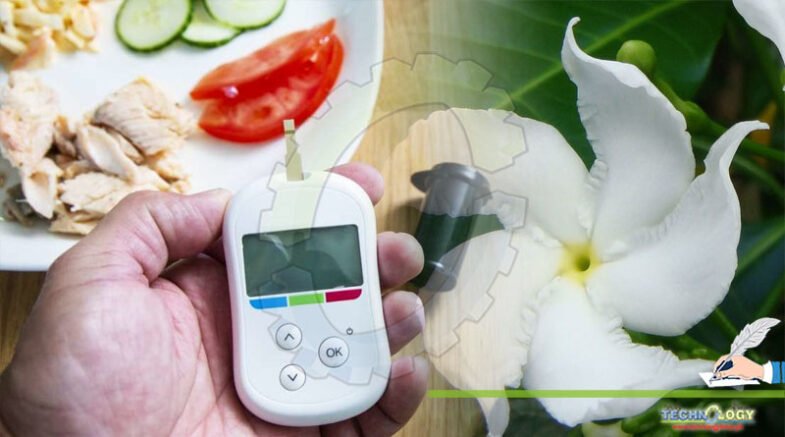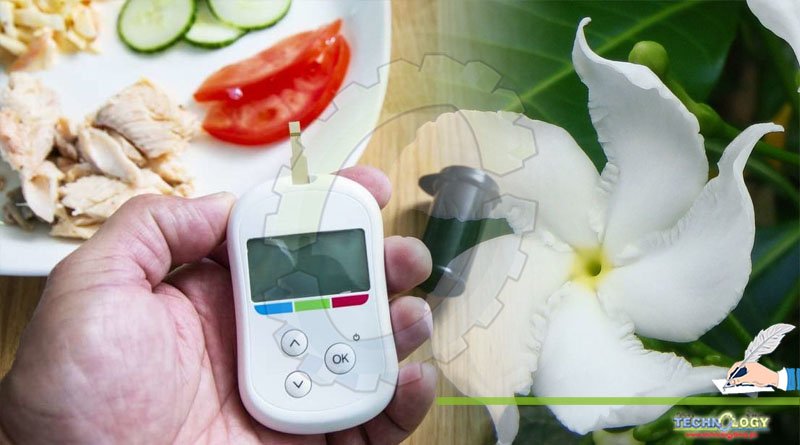Large number of herbs and other plant materials are reported all over the world for the treatment of diabetes.

Despite all the advances in therapies, diabetes remains a noteworthy reason of mortality and morbidity around the globe. History of treatment of diabetes with medicinal plant is very old, originating from Ebers papyrus of 1550 B.C.
There are plenty of substances available to maintain and to cure diabetes, but full recovery from diabetes has not been reported. Different synthetic substances like medicinal herbs with glucose lowering activity are identified around the globe, and this has prompted great interest among researchers in this regard to study various plants with medicinal properties.
Generally, the pharmacologic therapy of diabetes mellitus (DM) incorporates insulin and glucose lowering substance taken orally. There is a rising need for the production of anti-diabetic agents and other dietary modulators that have anti-diabetic potential. This tendency is because insulin can’t be utilized orally, and its repeated infusions have serious adverse effects.
In addition, certain oral hypoglycemic agents are not powerful in controlling diabetes in chronically ill patients. So, ethnobotanicals reported around 800 therapeutic plants utilized for controlling diabetes mellitus. Various plants, including vegetables, are normally expended in India and different parts of the world; many of these are reported to have anti-diabetic potential.
A lot of plants like Allium sativum, Momordica charantia, Ocimum sanctum and Azadirachta indica reported to have anti-diabetic potential. These plants have strong hypoglycemic activity; however, their impact on oxidative stress in diabetes mellitus has not been completely examined.
Plants, prime source of carbohydrates, proteins, amino acids, minerals and other essential vitamins are not only used as food, but also source of fiber and raw material for industry. Along with it, plants are also important of their medicinal value. Since ancient times about 40,000-100,000 plants are serving humans for their medicinal purposes.
Plants have always been an exemplary source of drugs, and many of the currently available drugs have been derived directly or indirectly from them. Among the advantages declared for the remedial uses of plants, their effectiveness, easy access, well-being to health and being economical are the remarkable ones. And on account of these benefits, medicinal plants are actively used by the practitioners in their daily medical practices.
These beneficial medicinal effects of plant materials typically result from the combinations of secondary products present in the plant. By the advocacy of the expert committee of World Health Organization and by revived awareness to herbal therapy, a new realm of interest has been developed in conventional medicine to treat diabetes.
WHO stated in 1980 that new ways for treating diabetes should be explored. About 800 plants have been reported by World ethnobotanical information to alleviate and manage diabetes.
History of treatment of diabetes with medicinal plant is very old, originating from Ebers papyrus of 1550 B.C. Large number of herbs and other plant materials are reported all over the world for the treatment of diabetes. The hypoglycemic agents present in these medicinal plants are a potent source for developing new therapeutic leads and dietary addition to existing ones.
Anti-diabetic potential of few plants has been assisted by scientific data, showing that in different societies herbal treatments are done for the treatment of diabetes since past.
In increased cases of diabetes mellitus around the world, there has been focused utilization of plant derived polyphenols to prevent the beginning and development of diabetes mellitus and its related complications. Aspalathus linearis, usually known as rooibos, is a rare glycosylated herb containing polyphenols along different functions together with the cure of diabetes mellitus.
A number of plants have been used as traditional medicine for the treatment of various diseases since ancient times. Medicinal plant Curcuma longa, common name of the plant is turmeric, used as spice, belonging to family Zingiberaceae.
Piper nigrum also used as spice commonly known as black pepper belonging to family Piperaceae. Date fruit belonging to family Arecaeae, scientifically known as Phoenix dactylifera all of them are familiar for their effect on glucose regulation among all the activities performed by them.
Diabetes is the most vital, non-infective widespread metabolic disease. Extract of Ocimum sanctum rise the intracellular calcium levels in beta cells of pancreas and enhance the secretion of insulin.
Most plants contain terpenoids, alkaloids, carotenoids, glycosides, flavonoids and have glucose lowering potential. The glucose lowering substances enhance the functions of the pancreas and increase the discharge of insulin from the beta cells of the pancreas.
Sixty percent of the total population utilizing therapeutic herbs and a specific number of therapeutic herbs reported to have anti-diabetic potential. These therapeutic herbs comprise Allium sativum (garlic), Momordica charantia (bitter-melon or ampalaya), Phyllanthus amarus (gale of the wind), Eugenia jambolana (jamun), Withania somnifera (winter cherry), Pterocarpus marsupium (Indian kino), Ocimum sanctum (Tulsi), Tinospora cordifolia (Guduchi) and Trigonella foenum graecum (fenugreek).
Many shrubs and nutritional supplements that have been utilized to treat DM are vanadium, l-carnitine, chromium and vitamin E. The mode of action of these compounds in glucose lowering comprises the activation of glycogenesis, hepatic glycolysis, pancreatic beta cell potassium channel blocker action, modulation of glucose absorption from the intestine and cyclic-AMP activation.
Plant Tabernaemontana divaricata (pinwheel flower) is a common shrub found in the tropical regions and previously reported to have medicinal properties. The ethnobotanical studies showed its pharmacological activities due to the presence of alkaloidal and non-alkaloidal constituents. Due to the presence of these phytochemical constituents, the plant T.divaricata reported to have antioxidant, anti-inflammatory, antitumor, analgesic and cholinergic properties. This plant has reported to have therapeutic potential against Alzheimer’s disease and myasthenia gravis.
Hundreds of indigenous plants have used for the treatment of many diseases and according to the data of WHO, eighty percent of the whole world population uses herbal treatments. People living in developing countries can’t take advantages of modern pharmaceutical treatments as they are very expensive. Treatment with medicinal plants is still famous for the people who want cost-effective therapies.
In the United States, about twenty-five percent of the modern medicines have been derived from the botanical origin. The anti-diabetic and cytotoxic potential of the plant T. divaricata have been reported in 2011 as the plant significantly lowered the blood glucose levels and showed low cytotoxic potential in the mice.
This article is jointly written by Maria Daud, Wafa Majeed, Ambreen Mehmood Awan, and Mahnoor Syed from Institute of Pharmacy, Physiology and Pharmacology, University of Agriculture, Faisalabad, Pakistan.
